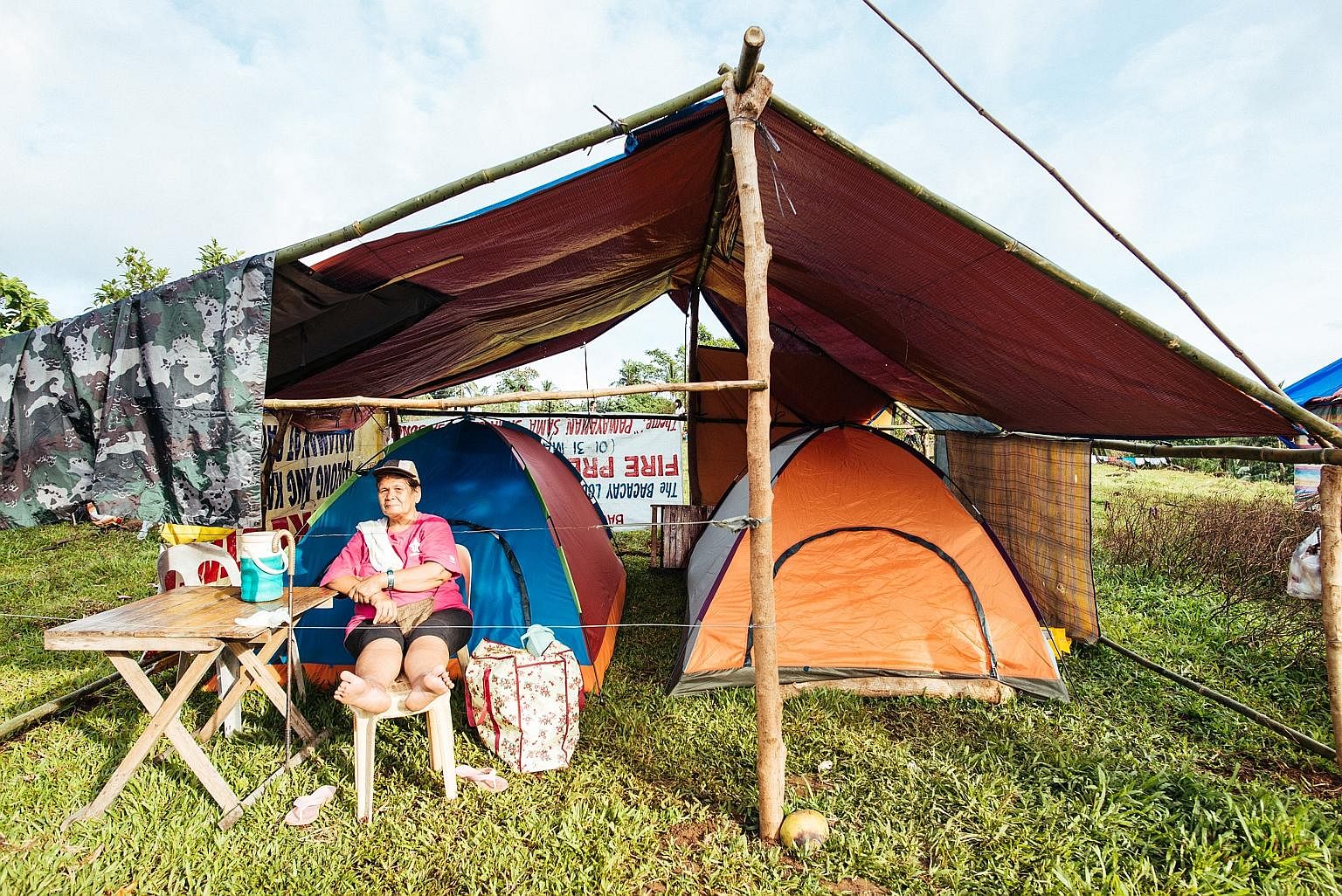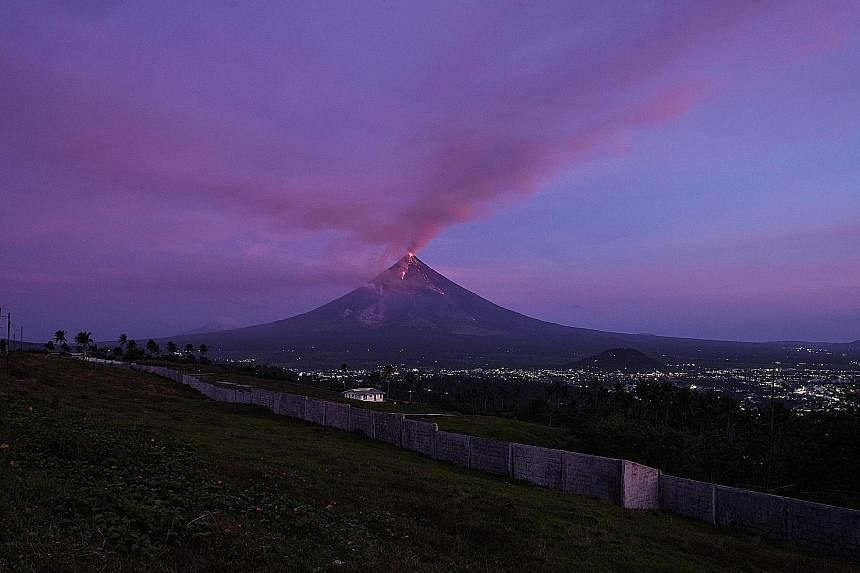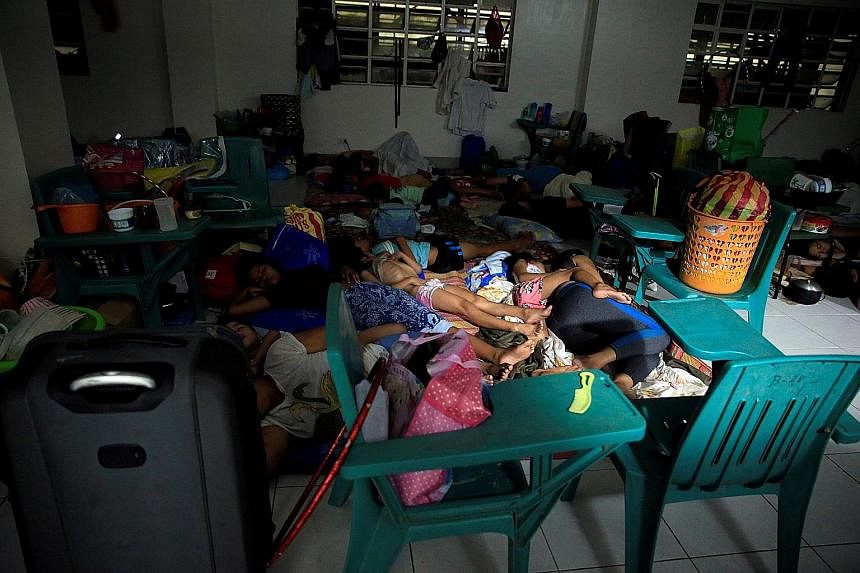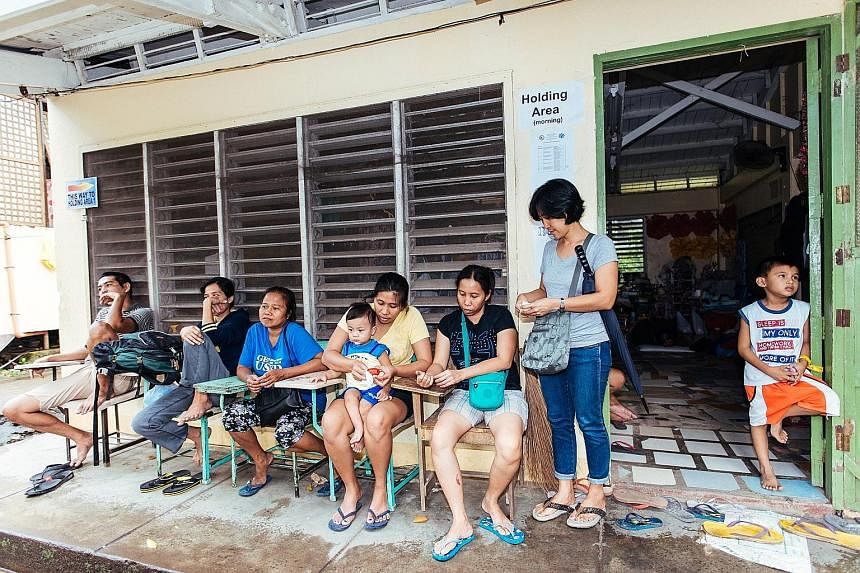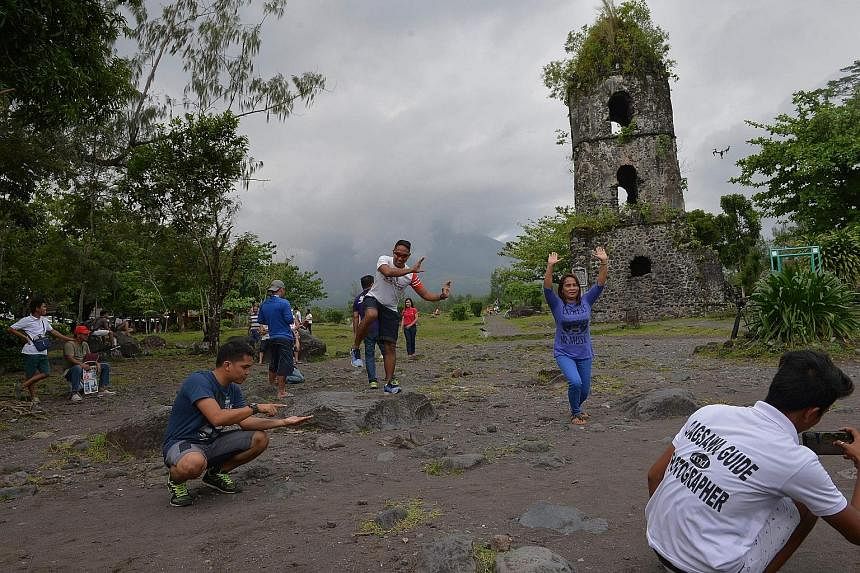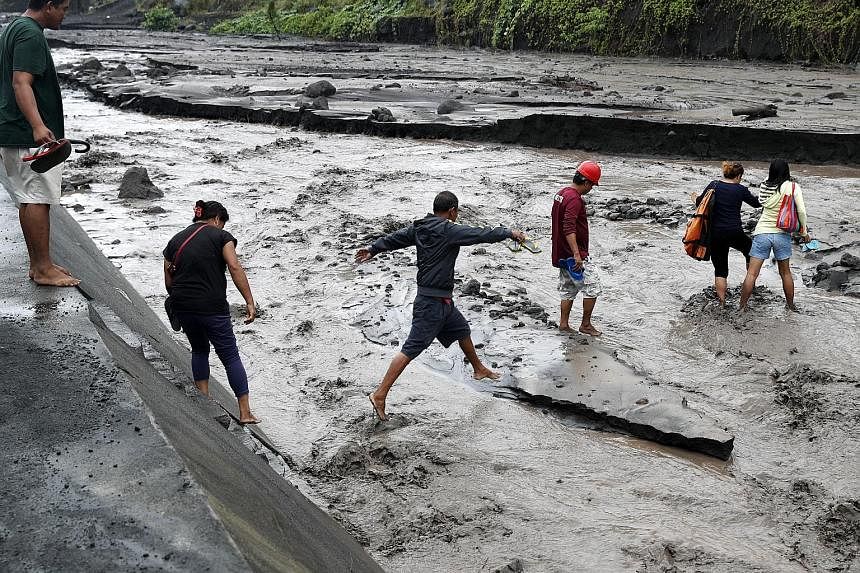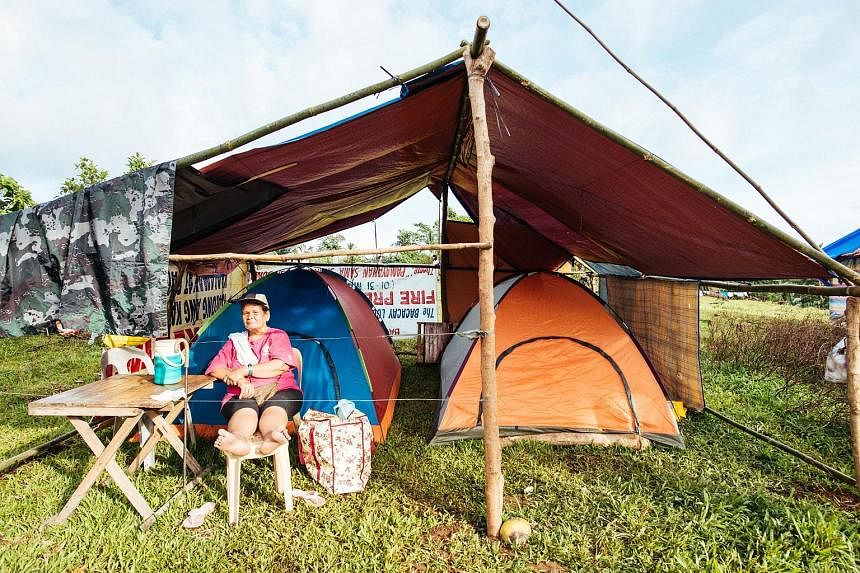Each day for the past five weeks, Ms Marcela Balla, 66, has had to cross a highway and walk down a narrow trail to a creek 500m away to bathe and empty her chamber pot.
She is staying inside a "tent city" with over 800 other evacuees from Lidong district in Santo Domingo town, which lies inside an 8km radius danger zone from Mount Mayon's crater.
Since it started erupting on Jan 13, the 2,460m high volcano, popular for its symmetry and classic cone, has been generating giant cauliflower clouds of superheated ash rising 4.8km in height, and bursts of fireworks-like lava.
Located at the southern tip of the main Philippine island of Luzon, the volcano has in the past month displaced nearly 90,000 people from their homes and disrupted their livelihoods.
Most of those displaced are staying in dozens of evacuation centres scattered across the mainly farming Albay province.
Albay Governor Francis Bichara said these sites are already bursting at the seams. "The ratio of the number of evacuees per room should be one to 50. But we've exceeded that. We are now at one to 200," he said.
He said the congestion is causing health problems, especially among the young and the elderly, and aggravating sanitation woes at the shelters.
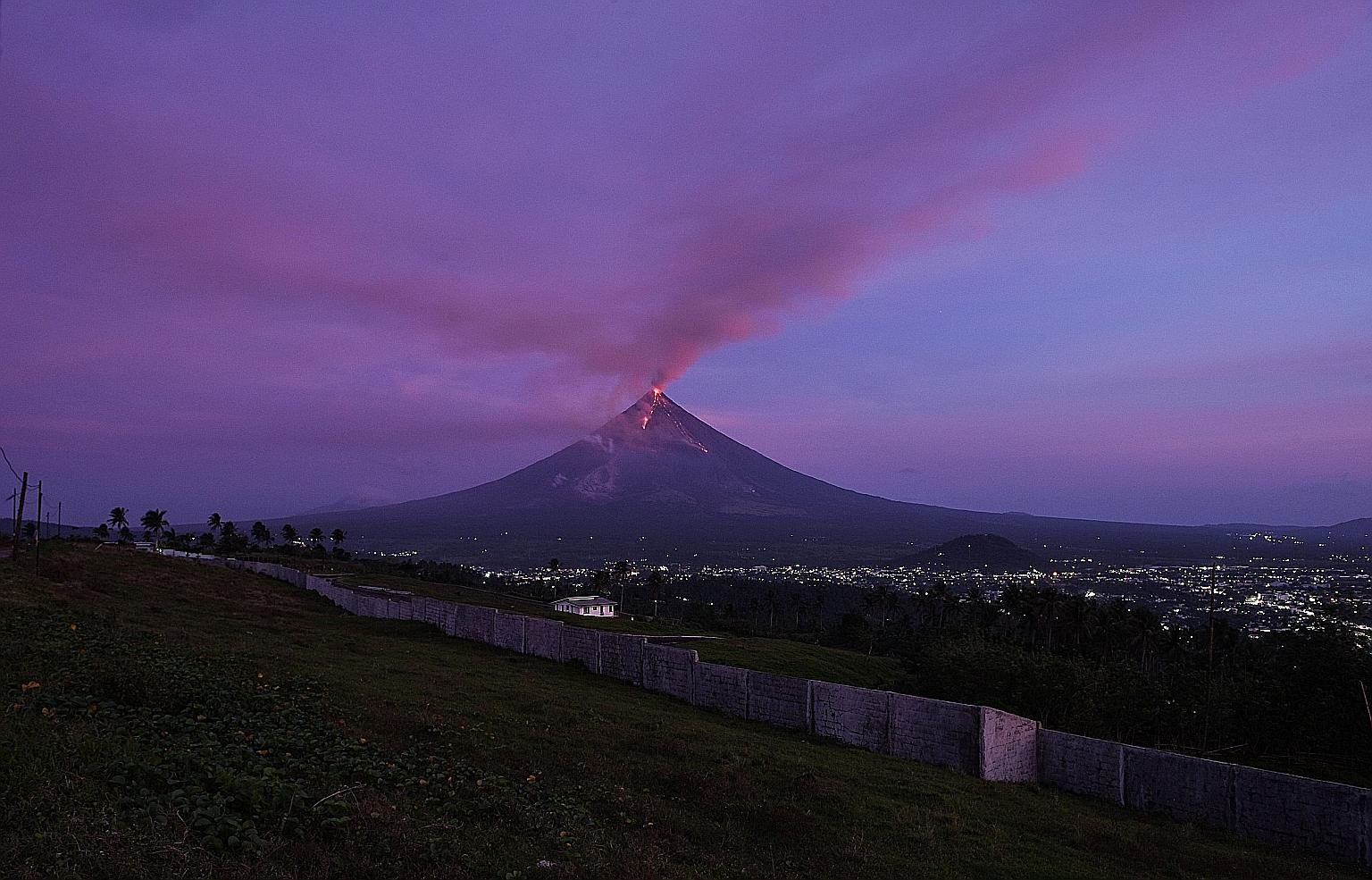
President Rodrigo Duterte has released some 50 million pesos (S$1.29 million) to meet the evacuees' immediate needs. But local officials said they need more.
The government's resources are stretched. The Philippines is the world's fourth most disaster-prone country, after the United States, China and India.

Typhoons cause the most devastation. But more than 100 million Filipinos also live under the constant threat of occasional earthquakes and volcanic eruptions. Some 25 active volcanoes are scattered across their islands.
COPING WITH MISERY
"It's crowded, noisy. We can't sleep well. There are mosquitoes. It's very difficult, especially if you have a baby," said Ms Maria Luisa Lustado, 32, a cleaner at The Oriental Legazpi hotel. She has an 11-month-old son and an eight-year-old daughter with her at the Albay Central School, which is doubling as a temporary shelter.
"They won't allow us to bathe or defecate (at the school)," said Ms Norrie Azores, 49, a councilwoman from Matanag district in Legazpi City, just outside the danger zone.
The city and four towns, with a total population of 500,000, are the most affected whenever Mayon erupts.
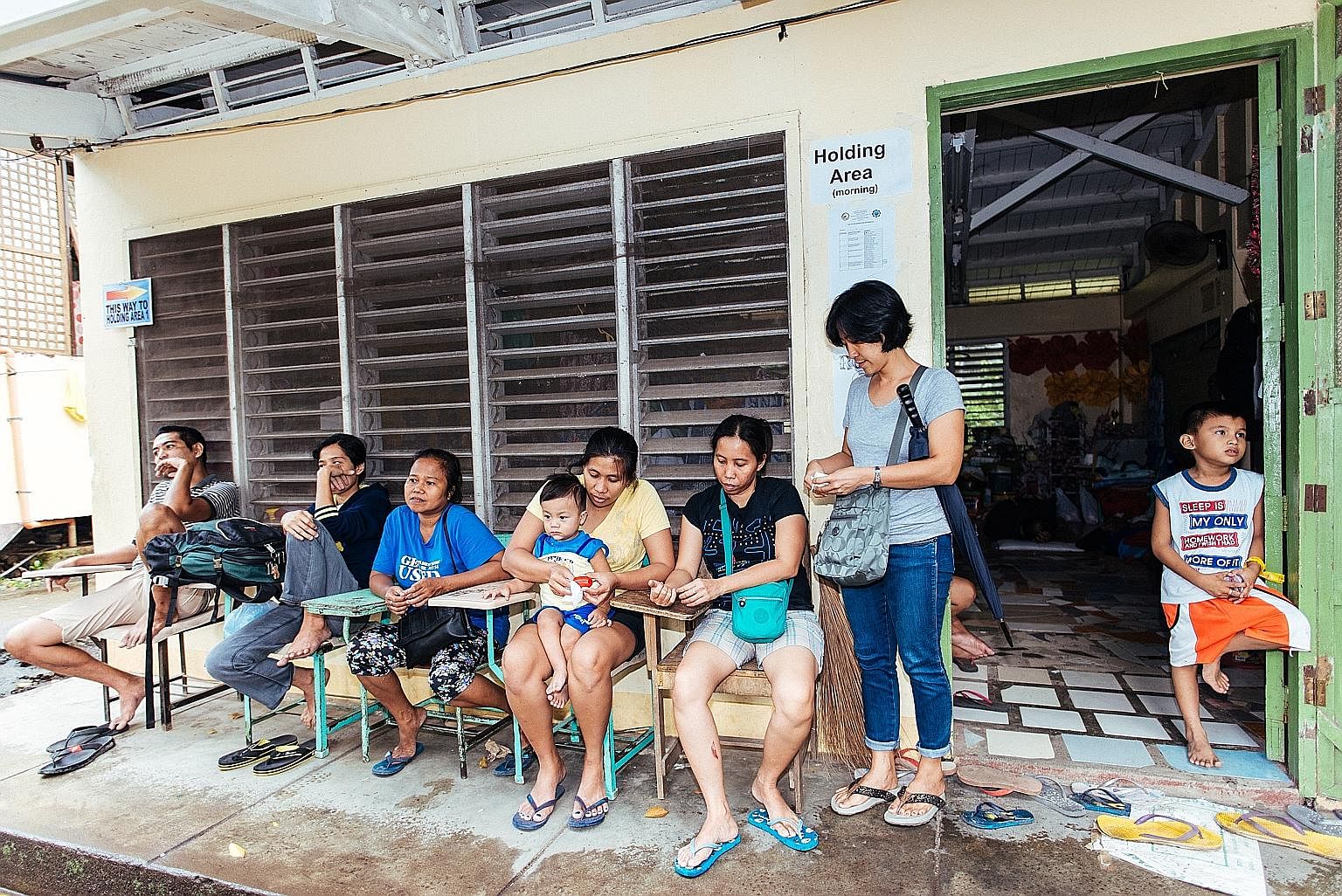
Many people, including Ms Azores' 72-year-old mother, have started to return to their homes inside the no-go zone.
"It's better for her there. There's a toilet, and she can sleep better," she said.
Many male evacuees are also sneaking past police checkpoints to tend to their crops, livestock and water buffaloes.

"We can't bring our buffaloes to the evacuation centres. Who's going to feed them?" said Mr Arnel Dimalanta, 42, a farmer and part-time construction worker. They also have to set traps for rats that can decimate entire farms if left to proliferate, he added.
But the danger posed by Mayon is very real. In 1993, 75 farmers died after they were overrun by a hot cocktail of ash, lava and mud during an eruption.
The men always have motorcycles by their side, although superheated pyroclastic materials hurled from a volcano can move at speeds of up to 700kmh.
DANGER IN BEAUTY
Mayon, 490km south-east of the capital Manila, is one of the world's most active volcanoes. It is named after a fictional princess, Magayon (Beautiful Maiden), in a folk tale about star-crossed lovers and unrequited love.
Two warriors fought for her love. In the end, as her true love lay dying in her arms, she took her own life. Mount Mayon rose from the spot where legend said the princess and her lover were buried.
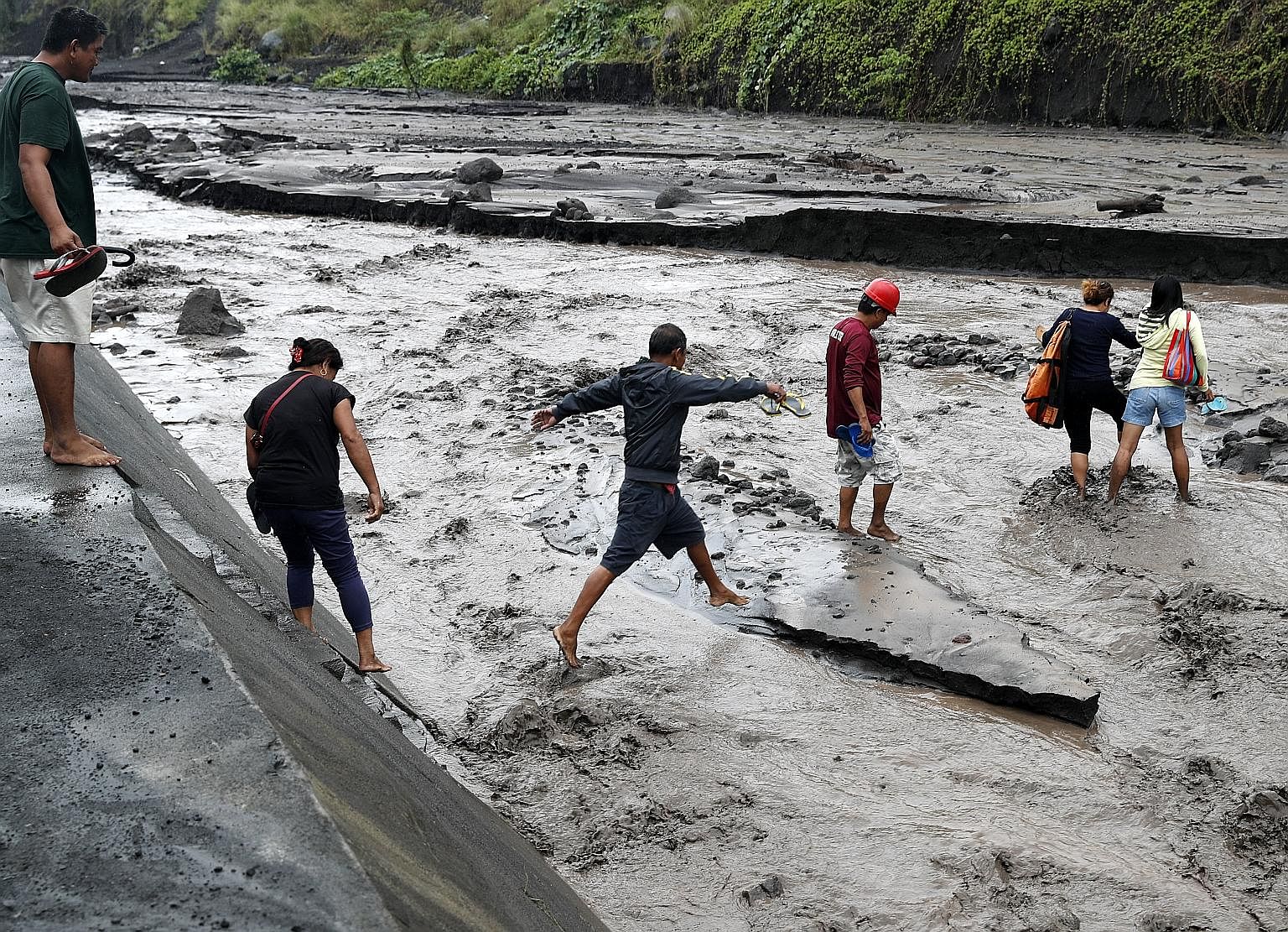
While the underlying tale is steeped in romance, the volcano itself has been a deadly force of nature. Its most powerful eruption in recorded history happened in 1814, when the entire town of Cagsawa was buried in volcanic debris, and more than 1,200 people were killed. The bell tower of a church is all that remains of the town.
Today, Cagsawa's ruins are a popular tourist destination, offering the most iconic view of the mountain.
-
On nature's fault lines
-
Mount Mayon sits on what is known as the "Ring of Fire", a 40,000km arc of over 450 volcanoes and fault lines encircling the Pacific Basin.
The arc stretches from the southern tip of South America, up along the coast of North America, across the Bering Strait, and down through Japan and then south to New Zealand.
Most of the world's active volcanoes are found on the western edge, from the Kamchatka Peninsula in Russia, through the islands of Japan and South-east Asia, to New Zealand.
Mount Kusatsu-Shirane, 160km north-west of Tokyo, erupted about a week after Mount Mayon started erupting on Jan 13, killing a Japanese soldier in an avalanche and injuring a dozen people at a ski resort.
Mount Agung in Bali has been spewing ash since November, disrupting flights and forcing some 44,000 on the Indonesian island to evacuate. Over in Sumatra, Mount Sinabung has been erupting steadily since 2015. Its latest eruption was in last December.
Around 90 per cent of the world's earthquakes occur within the Ring of Fire.
Last week, Taiwan's coastal city of Hualien was hit by a magnitude 6.4 quake that killed at least 17 people. Taiwan lies near the junction of two tectonic plates.
On Jan 23, a magnitude 6.1 quake struck off the south of Java, shaking even the offices and high-rise homes in Jakarta 140km away.
On the same day, a magnitude 7.9 earthquake struck off the coast of Alaska.
Geologists warn that it is just a matter of time before the "Big One" hits Metro Manila.
If a fault line beneath the metropolis of more than 10 million people moves, half the region will be devastated and the death toll is expected to top 35,000.
Raul Dancel
While Mayon's ongoing eruption has drawn interest from around the world, it has yet to lead to a tourism boom that locals had hoped for.
"Tourists are staying away because they're afraid. Airlines have also been cancelling flights, so we're not seeing a bonanza," said Ms Mylene Nieva, 38, who works at a small lake resort near Cagsawa.
Still, there are some who have benefited from the renewed interest in the centuries-old volcano which has erupted 47 times since 1616.
Tourist guide Gemmalyn Acurin, 34, said she now makes up to 1,000 pesos a day taking "trick shots" for visitors at Cagsawa Ruins. Even on a slow day, she can still get up to 300 pesos, double what she used to make before Mayon started spewing ash and lava.
At The Oriental Legazpi, front desk staff John Gilbert Listanco, 24, said he has seen a small increase in the number of guests, mainly Filipinos from other regions. But many are checking in for just a day or two to catch a glimpse of Mayon before moving on. Previously, they would spend their entire vacation in the picturesque province.
WORST-CASE SCENARIO
Experts warn that Mayon, placed on the alert level 4 since Jan 22, may continue spewing ash and lava for at least two more months.
Level 4 warns of an imminent hazardous eruption - possibly within days. The highest level 5 means a hazardous eruption is taking place.
Mr Renato Solidum, head of the Philippine Institute of Volcanology and Seismology, said the worst-case scenario would be for a white-hot cocktail of gas and volcanic debris to streak down from the crater.
Lahar flows - mud made up of soil and ash - have affected several of Albay's towns and cities. More lahar is expected as Mayon keeps erupting.
Mr Solidum said Mayon could still expel over 50 million cubic m of magma.
"If the crater is plugged, then gases will accumulate, and there will be enough gas to explode the magma. There will be very tall eruption columns, or magma can move very fast. We don't want that, but we can't rule it out," he said.
Those living in Mayon's shadow and living off its fertile soil have learnt to cope with its rumblings and flare-ups.
Ms Azores, the councilwoman, has been to an evacuation centre three times - in 2009, 2014 and now, in 2018. "Sometimes, it's terrifying. It always comes suddenly," she said, with a tinge of resignation.
